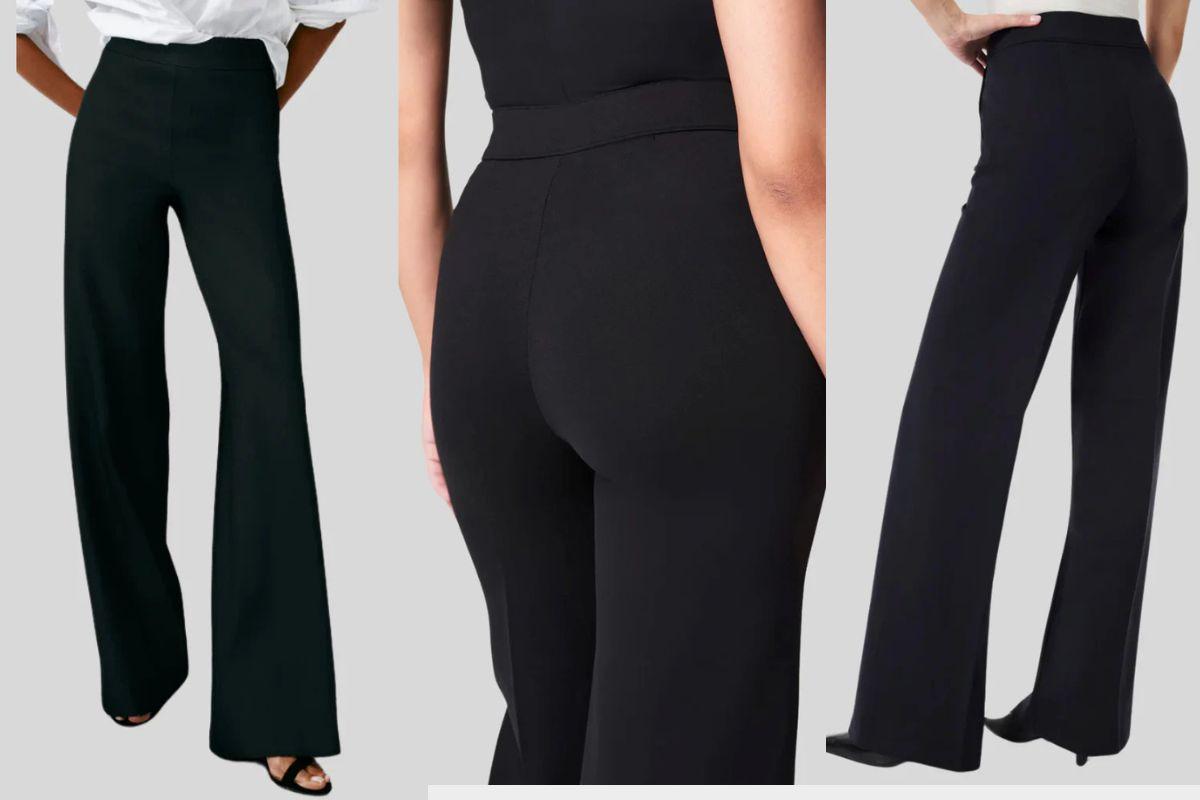-
Noticias Feed
- EXPLORE
-
Páginas
-
Grupos
-
Eventos
-
Blogs
Why sustainable activewear is the future of fashion and function

Sustainable activewear combines eco-friendly materials with top athletic performance. It uses recycled plastic bottles, organic cotton, and plant-based fabrics. These materials work just as well as regular workout clothes. Top brands now use green manufacturing and fair labor practices. Sustainable activewear is getting cheaper and easier to find. As more people learn about environmental issues, these eco-friendly options will dominate the market. You don't have to sacrifice performance to help the planet.
Fashion's Environmental Problem
Traditional fashion practices have created an environmental crisis that demands immediate attention. The shift toward sustainable activewear represents a crucial response to decades of harmful manufacturing processes. Understanding these environmental impacts helps explain why sustainable alternatives are becoming essential for conscious consumers.
How Regular Fashion Hurts Our Planet
The fashion industry wastes huge amounts of water and energy. Regular workout clothes use materials that take hundreds of years to break down. These synthetic materials release tiny plastic pieces into our oceans and soil. The fashion industry creates 10% of all carbon emissions worldwide. That's more than planes and ships combined.
Making one cotton t-shirt uses about 700 gallons of water. Synthetic materials like regular polyester come from oil and gas. The chemicals used to make these fabrics pollute rivers and air. Every year, millions of workout clothes end up in landfills. They sit there for centuries without breaking down naturally.
Fitness Fans Want Better Options
Today's fitness lovers know their choices matter. They already care about health and wellness. Now they want their workout clothes to support planetary health too. Social media helps spread this message. Fitness influencers talk about eco-friendly gear choices.
This creates a ripple effect throughout fitness communities. People share information about sustainable brands and materials. They encourage friends to make better choices. The fitness community is driving demand for greener options.
Materials That Make a Difference
The foundation of sustainable activewear lies in innovative materials that transform waste into high-performance textiles. These revolutionary fabrics prove that environmental responsibility doesn't mean sacrificing athletic performance. Modern sustainable materials often exceed the capabilities of their conventional counterparts.
Recycled Fabrics That Work
Recycled polyester comes from old plastic bottles and used clothes. It keeps the same moisture-wicking power as regular polyester. The material dries fast and moves sweat away from skin. Companies can now make recycled fabric that looks and feels identical. Some brands have special recycling methods that make even better fabrics.
One plastic bottle can become part of a new workout shirt. This process saves energy compared to making new polyester from oil. The recycled material lasts just as long as regular fabric. It holds colors well and resists fading after many washes.
Natural Fibers That Perform
Organic cotton, hemp, and bamboo are getting performance upgrades. New processing methods make these natural materials better at managing moisture. They naturally fight bacteria that cause bad smells. This means you can wear them longer between washes.
Merino wool works great for temperature control during workouts. It keeps you warm when cold and cool when hot. The wool naturally resists odors for days of wear. Advanced processing makes wool suitable for high-intensity exercise. It feels soft against skin and moves with your body.
New Materials from Unexpected Sources
Scientists are creating fabrics from algae, mushrooms, and fruit peels. These bio-based materials break down naturally after use. They can be designed to meet specific performance needs. Some provide unique benefits like extra stretch or cooling effects.
Lab-grown materials offer exciting possibilities for the future. Companies grow leather-like materials from mushroom roots. These materials can be engineered for strength, flexibility, and durability. They provide all the benefits without harming animals or environment. Sustainable activewear brands increasingly incorporate these innovative bio-based materials.
Performance That Beats Expectations
Many people assume sustainable activewear can't match conventional performance standards. Real-world testing and athlete feedback consistently prove this assumption wrong. The quality focus in sustainable manufacturing often results in superior durability and comfort.
Clothes That Last Longer
Sustainable workout clothes often outlast regular options. Quality focus means better construction and stronger materials. High-quality organic and recycled fabrics keep working wash after wash. They maintain their shape, color, and performance for years.
Better durability means better value for your money. You buy fewer clothes over time. Many brands offering sustainable activewear also provide repair services. Some even take back old clothes to recycle into new ones.
Comfort That Feels Better
Sustainable materials often feel better on skin. Organic cotton and bamboo don't cause irritation or allergies. They use fewer harsh chemicals during manufacturing. This gentler process creates softer, more comfortable fabrics.
Many athletes notice less chafing when switching to sustainable activewear. Natural materials breathe better than synthetic alternatives. They create better airflow around your body during exercise. The result is improved comfort during long workouts.
Moisture Control That Works
Modern sustainable fabrics manage sweat just as well as regular ones. Recycled polyester can be designed with special structures for moisture transport. Natural fibers like merino wool regulate temperature through their natural properties. Some brands blend natural and recycled synthetic fibers together.
These blends combine the best features of different materials. They create superior moisture management that adapts to activity levels. The fabrics work harder when you work harder. They keep you comfortable during any type of exercise.
Brands Leading the Change
The sustainable activewear revolution is driven by forward-thinking companies that prioritize environmental responsibility. These brands demonstrate that profitability and sustainability can work together successfully. Their innovations set new standards for the entire athletic wear industry.
Companies Setting the Standard
Several pioneering brands prove that eco-friendly can mean high performance. Patagonia leads with environmental activism and innovative recycled materials. Their activewear shows that outdoor gear can be both technical and responsible. The company shares detailed information about their supply chain practices.
These established leaders invest heavily in research and development. They create new materials and manufacturing processes for others to follow. Their transparency helps consumers understand what true sustainability means. They set benchmarks for the entire industry to meet.
New Companies Disrupting the Market
Fresh sustainable brands start with the environment as their main mission. They don't add green practices to old business models. Instead, they build sustainability into everything from day one. This approach creates more authentic and effective sustainable practices.
Many focus on specific types of activewear or activities. Some make yoga clothes entirely from ocean plastic. Others create running gear from agricultural waste. This specialization helps them perfect both sustainability and performance. They become experts in their chosen areas.
Big Brands Going Green
Even major athletic companies now recognize they need sustainable options. They're launching eco-friendly lines and setting environmental goals. This mainstream adoption makes sustainable choices more available to everyone. It brings resources and distribution power to green activewear development.
Traditional brands have manufacturing expertise and global reach. When they commit to sustainability, change happens faster. Their established customer bases get exposed to sustainable options. This combination accelerates market transformation across the industry.
Money Matters and Value
The economics of sustainable activewear extend far beyond initial purchase prices. Smart consumers recognize that higher upfront costs often lead to better long-term value. Understanding these financial benefits helps justify investments in quality sustainable activewear.
Initial Cost vs. Long-Term Savings
The sustainable activewear market may cost more upfront but saves money over time. Better durability means buying fewer replacement pieces. Many sustainable brands offer repair services for even longer life. High-quality sustainable pieces often have better resale value too.
The growing second-hand sustainable fashion market creates additional value. You can sell pieces you no longer need for good prices. This helps offset the initial investment in quality sustainable gear. It also keeps clothes out of landfills for longer.
Prices Are Coming Down
The sustainable activewear market grows rapidly every year. More competition drives innovation and better pricing for sustainable activewear options. As production scales increase, sustainable options become more affordable. Manufacturing processes improve to reduce costs while maintaining quality. This makes eco-friendly workout clothes accessible to more people.
New business models make sustainable gear more accessible. Subscription services and rental programs lower upfront costs. These models align with sustainability principles while addressing budget concerns. They let more people try sustainable options without big investments.
Supporting Fair Labor Practices
Sustainable brands usually prioritize fair working conditions alongside environmental goals. This means better wages and safer factories for workers. It often includes community investment in manufacturing regions. Consumers increasingly value these comprehensive ethical commitments.
The extra cost sometimes reflects these social responsibility efforts. Many people willingly pay more when they understand the full benefits. They want their purchases to support both environmental and social good. This creates market demand for truly responsible manufacturing.
Innovation Driving the Future
Technology continues to revolutionize how sustainable activewear is designed and manufactured. These innovations prove that environmental responsibility accelerates rather than limits technological progress. The future holds exciting possibilities for even more advanced sustainable materials and processes.
Smart Technology Meets Sustainability
New smart textiles monitor heart rate and other health data. These high-tech fabrics use sustainable materials and green manufacturing. They prove that technology and environmental responsibility work together well. Innovation in sustainable activewear doesn't have to harm the planet.
Sustainable brands pioneer new manufacturing technologies that use less water. They eliminate harmful chemicals from production processes. These improvements often create better products while helping the environment. Process innovation leads to both quality and sustainability gains.
Circular Economy Solutions
The future lies in circular systems where nothing gets wasted. Brands design products for multiple life cycles. They create take-back programs and recycling systems. Some companies break down old clothes to make new ones.
Closed-loop systems represent the ultimate in sustainable manufacturing. Old garments become raw materials for new products. This approach eliminates waste by design. Every piece of material stays in use instead of going to landfills.
Custom Fit and On-Demand Production
New sustainable manufacturing enables personalized, made-to-order production. This reduces waste from overproduction while providing perfect fits. Digital printing and local production support customization while staying sustainable. On-demand models let smaller brands compete with large manufacturers.
Personalization technology is getting better and more affordable. Customers can get exactly what they want without excess inventory. This approach reduces waste throughout the supply chain. It also supports local manufacturing and job creation.
How People Are Changing Their Habits
Consumer behavior is shifting dramatically toward environmentally conscious purchasing decisions. Modern fitness enthusiasts want their workout gear to reflect their personal values. This behavioral change creates powerful market forces that drive sustainable activewear innovation.
Values-Based Shopping Decisions
Modern consumers want their purchases to reflect their personal values. Fitness enthusiasts already prioritize health and wellness. They naturally extend this to include planetary health. This alignment creates strong loyalty to sustainable brands.
Research shows people will pay more for sustainable products. They need to understand the environmental and performance benefits first. Education about these benefits drives sustainable activewear adoption. Word-of-mouth recommendations from satisfied customers accelerate growth.
Social Media Influence
Social media platforms drive sustainable activewear awareness and adoption. Fitness influencers regularly showcase eco-friendly brands and products. User posts demonstrate real-world performance and durability. This builds confidence among potential customers.
Online communities focused on sustainable living include active activewear discussions. Members share experiences, recommendations, and honest reviews. These conversations influence purchasing decisions across broader networks. Social proof accelerates sustainable brand adoption.
Overcoming Common Concerns
Despite growing acceptance, some consumers still have reservations about sustainable activewear performance. Addressing these concerns directly helps more people make the transition confidently. Education and real-world examples effectively dispel most performance myths.
Performance Questions
Many people worry that sustainable activewear won't perform as well. Extensive testing proves sustainable materials match or beat conventional alternatives. Real-world use by athletes confirms these performance capabilities. Education helps overcome these misconceptions about eco-friendly workout clothes.
Brands that provide detailed performance data build consumer confidence. Trial periods and guarantees let customers test products risk-free. Once people experience sustainable activewear performance, concerns disappear. Positive experiences lead to repeat purchases and recommendations.
More Choices Available Now
Early sustainable activewear had limited sizing and style options. The market now offers comprehensive size ranges and diverse styles. Leading sustainable brands provide options that compete directly with conventional choices. Activity-specific designs meet the needs of different sports and fitness activities.
Style variety continues expanding as the sustainable activewear market grows. Sustainable brands now offer everything from yoga wear to running gear. Color choices, patterns, and cuts match what conventional brands provide. Customers don't have to compromise on style to choose sustainability.
Tips for Choosing Sustainable Activewear
Making the right choices requires understanding what makes sustainable activewear truly effective. Smart shopping strategies help you find pieces that deliver both performance and environmental benefits. These practical tips guide you toward the best sustainable options for your needs.
Here are key tips for selecting the best sustainable workout clothes:
-
Look for certifications like Global Organic Textile Standard (GOTS) or recycled content verification
-
Check brand transparency about materials, manufacturing, and supply chain practices
-
Read reviews from other customers about durability and performance
-
Consider versatile pieces that work for multiple activities to maximize use
-
Choose quality over quantity - invest in fewer, better-made pieces
-
Look for brands offering repair services or take-back programs
-
Check care instructions to maximize garment lifespan through proper maintenance
-
Consider your specific activity needs when selecting materials and features
-
Start with basic pieces and gradually build a sustainable activewear wardrobe
-
Research brand values to ensure they align with your personal priorities
Global Impact and What's Next
The sustainable activewear movement extends far beyond individual consumer choices. These collective decisions create measurable environmental improvements on a global scale. The future promises even greater innovations as the industry continues evolving toward sustainability.
Environmental Benefits Add Up
As more people choose sustainable activewear, environmental benefits multiply. Reduced water use, less chemical pollution, and diverted waste create meaningful change. Scaling sustainable practices across the industry amplifies positive impacts. Life cycle studies show significant improvements over conventional alternatives.
Every sustainable purchase contributes to demand for better manufacturing practices. This market pressure encourages more brands to adopt sustainable methods. The cumulative effect drives industry-wide transformation toward environmental responsibility. Individual choices create collective environmental benefits.
Industry Standards Are Changing
Sustainable activewear growth drives broader industry transformation. Conventional manufacturers adopt sustainable practices to stay competitive. Industry standards evolve to include environmental considerations. This systematic change creates momentum for continued improvement.
Certification programs establish clear standards for sustainable claims. These prevent greenwashing while helping consumers make informed decisions. Transparency initiatives provide frameworks for continued industry improvement. Standards create accountability and drive consistent progress.
Conclusion
Sustainable activewear represents the future of fitness fashion. It combines environmental responsibility with superior athletic performance. The materials, manufacturing processes, and brand practices continue improving rapidly. Consumer demand drives innovation and market transformation.
The choice between conventional and sustainable activewear becomes clearer every day. Sustainable options offer better durability, improved comfort, and alignment with personal values. Prices become more competitive while options continue expanding. Performance concerns are proving unfounded through real-world testing.
Leading brands demonstrate that environmental responsibility enhances rather than limits performance. Their investments in research and ethical manufacturing create products that exceed expectations. They're not just responding to market demand - they're actively shaping a better future.
For consumers, sustainable activewear provides superior value through multiple benefits. Enhanced durability means fewer purchases over time. Improved comfort creates better workout experiences. Environmental alignment supports personal values and planetary health.
The future belongs to brands and consumers who understand true performance. It extends beyond personal achievement to include planetary stewardship. Sustainable activewear isn't just the future - it's available right now. The question is how quickly we can make this essential transformation. Our health, performance, and planet all benefit from choosing sustainable options.
- Art
- Causes
- Crafts
- Dance
- Drinks
- Film
- Fitness
- Food
- Juegos
- Gardening
- Health
- Home
- Literature
- Music
- Networking
- Other
- Party
- Religion
- Shopping
- Sports
- Theater
- Wellness


